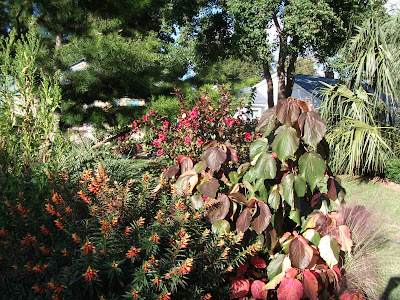Saturday morning as I walked around the yard I was surprised at all the new brown leaves on some of the plants in the garden. The low that morning was above freezing and the day turned out to be the warmest in weeks, a high in the 60`s and yet new brown leaves were everywhere!
The Rhapis excelsa at the front of the house had some brown spotting on the leaves that reached beyond the corner of the house. On the other side of the house my Cycas taitungensis that sits under the mystery citrus was heavily damaged. This same plant came through 18 degrees untouched while its more exposed sibling had about half its leaved burned.
Checking weather records for the previous week the coldest temp was 23 degrees a few days earlier, not enough to cause the new damage. I can speculate that it may have been the constant wind drying leaves pushed to their tolerance limits or it may be that the plants have been exposed to their maximum below freezing tolerance and are now beginning to show the damage.
The sago (C. taitungensis) was protected from the initial cold by the citrus, which is now losing leaves as a result of that cold. This more open canopy of the citrus tree may now be allowing the cold and wind to penetrate and Cycas taitungensis is very sensitive to drying winds in winter.
In the end this is all cosmetic damage, the brown leaves will be removed later this winter and the new growth will hide this winter sins.
Playing November 23 – Winning For Fun
1 year ago




